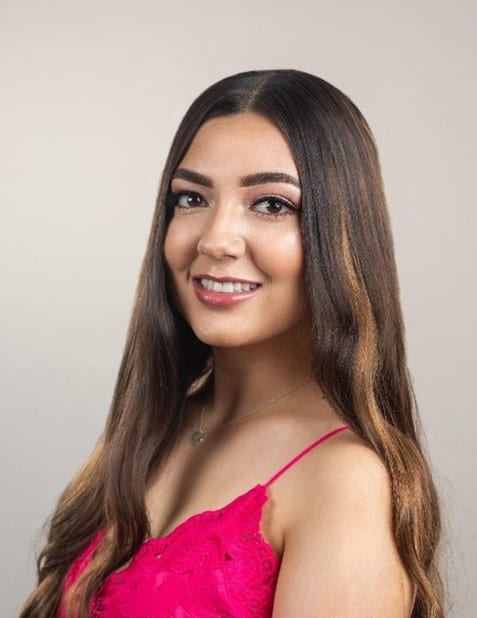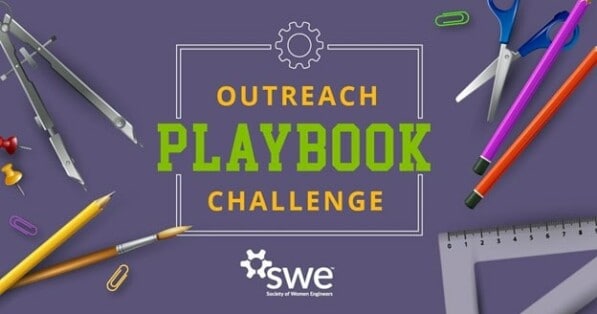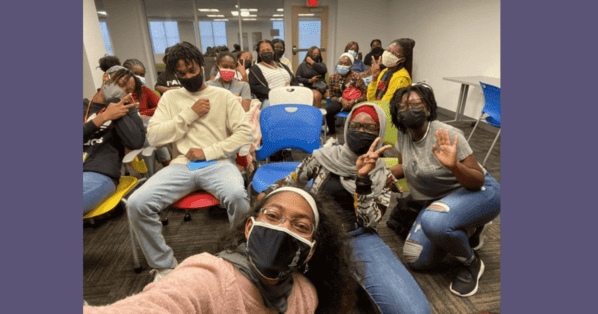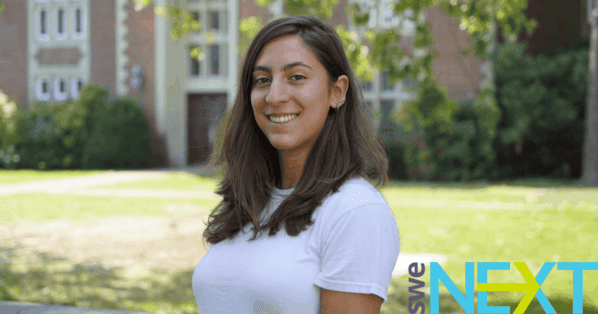Meet Katherine, Materials Science and Engineering Student at the University of California in Berkeley, CA.

Katherine is double majoring in Materials Science and Engineering and Chemical and Biomolecular Engineering at the University of California Berkeley. She is in her third year of her undergraduate studies.
How did you first become interested in STEM? What inspired you to study Materials Science and Engineering?
When I was little, I wanted to do a lot of different things, like being a doctor or a lawyer. But in high school, I realized I was good at, and enjoyed, all my STEM classes, especially chemistry and physics. Engineering seemed cool so I decided to be a Chemical Engineer. During college, I realized Chemical Engineering wasn’t exactly what I thought it was, and that my real passion was actually in Materials Science Engineering. I decided to double major.
What are some really neat things that Materials Science Engineers work on?
There are so many cool and innovative things that materials scientists are working on every day, I’ll just give you an example. In the field of biomaterials, 3D printed organs and tissues have been a focus in recent years. For someone with severe burns, if we can have custom-made artificial skin to replace the burned skin, the person would be able to resume much of their original day-to-day activities. This is empowered by people’s knowledge in MSE. The MSE field is interdisciplinary, since this specific application covers fields including Bioengineering, Mechanical Engineering, and Chemical Engineering.
Have you encountered any challenges as a woman studying Materials Science and Engineering? How have you overcome them?
Not particularly – MSE has a pretty balanced male-to-female ratio. I don’t feel like I’ve been treated differently based on my gender. However, I know that my department is not the same as others. Also, I have heard about gender discrimination in different engineering fields – whether implicit or explicit – occurring before.
The Berkeley section of the Society of Women Engineers has also really helped me find a supportive circle of women in engineering.
Can you tell us about a time when you failed and how you learned from it?
I had to lead a team that constructs lead-acid batteries to power a car in a club called ChemE Car. We ran into some problems with discharging the battery. We were following a model that worked really well in the past and we couldn’t figure out why it stopped working.
To ensure the success of the team, I communicated with each team member effectively to organize all the information known, took some time to reflect and figure out the problem. I also asked for some outside help from my friends and mentors. Ultimately, we resolved the issue.
I think one of the most important lessons college has taught me is to not be afraid to ask for and seek help.
What is a typical day like for you as a Materials Science and Engineering student?
For a typical day in my life during school, I would go to most of my lectures, labs, and discussions. My days in classes and labs usually start at around 8 AM and end at around 5 PM. Since college lectures and sections usually aren’t back-to-back, my schedule has a lot of breaks in between, which I use to study, work, or eat.
During my off time, I stay in my research lab and work on a project that focuses on creating a p-n junction in the interface between two liquids. This project studies materials behavior in jammed liquid-liquid interfaces and its goal is to create all liquid electronics. After school, I work on the battery project I mentioned earlier, as well as working on my outreach or corporate projects within the Society of Women Engineers.
At night, I usually hang out with my friends in my apartment and play board games. I also work on homework and grading the homework for an MSE course I am a teaching assistant for during the nighttime.
What do you love most about your school and its Materials Science and Engineering program?
I love how small the MSE program is here at Berkeley. We usually only get about 30 new students per year. This allows a smaller class size and much more personal connections with my professors and teaching assistants, as well as my classmates. The close-knit community is like a home away from home for me.
What advice can you share for our readers who are interested in going to school for Materials Science and Engineering?
Don’t focus, or let anyone else focus, on your gender if you’re going to be an engineer. Even if you are surrounded by guys, do not let that intimidate you or push you down. Focus instead on what you’re passionate about and don’t worry about your gender.
If you feel the need to find good support circles as a woman, Society of Women Engineers is a good place to start. Chase your passions, not what’s expected of you.
Meet Andrea, Materials Science and Engineering Student at the University of California in Berkeley, CA.

Andrea is double majoring in Bioengineering and Materials Science and Engineering at the University of California Berkeley. She graduates in May of 2022!
Can you tell us how you first became interested in Materials Science and Engineering?
I always loved science fairs, the process of identifying an experiment, and conducting it. I loved presenting my findings to a panel of judges and the whole school. That whole process was always exciting.
I was 11 years old when I was looking for a science fair experiment to do. That’s when I stumbled upon a term I had never heard of before. It’s called the Oligodynamic Effect. I was truly astonished by this phenomenon.
The Oligodynamic Effect describes the ability of small amounts of heavy metals to kill bacterial and viral cells by damaging the cell walls. I was convinced this was the route I wanted to go into for my 5th grade science fair project. I talked to my mom’s friend who is a clinical microbiologist and worked on designing an experiment with her. We seeded gold jewelry pieces as well as jewelry of other materials in agar plates and spread E.coli to compare the bacterial growth and zones of inhibition in the different plates. This was such a fascinating experience for me.
Little did I know that 10 years later I would be about to graduate with a degree in Bioengineering and Materials Science & Engineering, which looking back on this experience definitely sparked my interest for both areas.
Later on, my passion and love for coffee also led to another experience that reinforced my interest in STEM. I pursued another project, where I transformed coffee pulp, which highly contaminates water sources, in particular areas near my hometown. Producing biogas and organic fertilizers from this undesired waste allowed me to work on my problem solving skills and confirmed my love for engineering. I also discovered my passion for sustainability and helping the community around me.
Ultimately, my years in elementary, middle and high school always pushed me to pursue my passions. Amazing teachers, mentors and peers alongside an amazing STEM program in my school allowed me to discover my passion for engineering early on and my family always taught me to work hard to achieve my goals.
What are some really cool things that Materials Scientists and Bioengineers work on?
There are so many cool things people in Bioengineering and Materials Science & Engineering are currently doing. I am fascinated by all the amazing things industry professionals, startups, professors, graduate students, and my peers are working on. From developing degradable plastic, plant based meats, to cancer research, disease modeling, diagnostics, medical devices and much more.
What challenges have you encountered as a woman studying Biomedical Engineering, and how have you overcome them?
I have been lucky enough to have found a support group since the moment I started my undergraduate career. I joined SWE and found some of my closest friends.
Yes there are always people who try to make you believe you can’t do it, but in my experience that has been extremely rare, and their opinion never really mattered to begin with.
Tell us about a time you failed. How did you move on from that?
I have failed multiple times, but what truly matters is the attitude you adopt. Trial and error.
When I was in middle school, I had a math teacher tell me I was not “good at math”, yet I still got straight As, and worked hard to understand every concept in the class. His comment didn’t reflect my grades or understanding of the class, but he somehow wanted to make me believe I was not good enough. Although this was not a failure, it did affect me for a little bit. But I realized he probably did not care about my education as much as a teacher should and his discouragement only pushed me to work harder.
How might women and people from culturally diverse backgrounds bring positive contributions to Materials Science and Engineering and Biomedical Engineering?
As an international student, and woman in engineering I am convinced that cultural diversity is of utmost importance. There needs to be diversity in opinions, viewpoints, in everything really to keep life interesting and allow engineering to truly fulfill its mission: solve the world’s problems.
I believe we need women at the table (or lab bench) to work hand in hand with male peers, because gender is not indicative of curiosity, mental capacity, or work ethic. Women can bring positive contributions to engineering just like men can. We shouldn’t need to prove ourselves. We can do amazing things.
Organizations like SWE are a great pipeline to achieve gender equality.
Can you describe a “day in your life” studying Materials Science and Engineering and Bioengineering at UC Berkeley?
I wake up at around 8 am every morning (unless I have an 8 am class), then I like to make a list of the things I need to get done that day. I really enjoy planning things out, to make the most out of my time. I get ready, have a hot cup of coffee and some sort of pastry or granola bar. I leave my apartment and typically either call my family or listen to a podcast on my way to class. After class I head to the research lab I am part of, and get some experiments started for the day.
I take a break for lunch and eat outside in the lab’s breakroom. If it’s a nice day I would eat outside, we have a pretty nice balcony that overlooks one of my favorite areas on the Berkeley campus. After I’ve had lunch and chatted with some of the lab’s graduate students and other undergraduates I head back to the lab. I continue what I started and take a break to have some coffee.
After I’m done with my experiments, it’s time to head out for the day. I head home and eat a snack, work on some homework. I enjoy meeting my friends over dinner, or boba and catching up on our days. If I have afternoon classes I attend those and then it’s finally time to relax for a bit. I Facetime with my family, or do something fun like read a book, cook with my roommates, or clean my room.
I then work on my homework after dinner and watch some YouTube for a bit. I then walk over to my SWE meeting/event with my friends. After that I finalized all the work for the day and get some rest to be well rested for the next day!
What do you like most about UC Berkeley and its Materials Science and Engineering and Biomedical Engineering programs?
I truly love UC Berkeley, knowing everyone around you is extremely passionate and intelligent pushes you to work hard every day. The endless opportunities that are provided to us are life changing; amazing classes, research labs, and programs are simply unbelievable. I could spend days talking about it, the list goes on. My favorite part is perhaps the people who you encounter along the way, professors, mentors, fellow students who inspire you to become the best version of yourself.
Furthermore, I love the opportunity to perform research as an undergraduate student. I currently do cancer and biomaterials research at the Kumar Lab, where I study the synthesis of hyaluronic acid, which I use to create hydrogels for glioblastoma tumor invasion assays.
Can you share any advice for our readers who might be considering going to school for Materials Science and Engineering?
Personal: Pursue your dreams, even those that seem impossible. Sometimes classes will get rough, but you are capable of doing anything you set your mind to. Take care of yourself, always make sure you prioritize your health. Balance is key. Organize your time and make the best out of it!
Academic: if you are interested in or passionate about research, go for it! Don’t feel like you are not experienced enough. Talk to professors, and mentors who are willing to teach you and support you.
Author
-

SWE Blog provides up-to-date information and news about the Society and how our members are making a difference every day. You’ll find stories about SWE members, engineering, technology, and other STEM-related topics.






